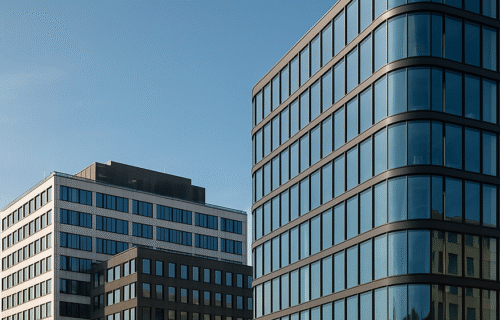Demand for premium office space in Prague continues to outpace supply, with vacancy in the Czech capital reaching its lowest level in years and rents edging higher amid limited new construction. According to data from Savills, CBRE, and the Prague Research Forum, overall vacancy fell to 6.6 percent by the end of the second quarter of 2025, equivalent to roughly 259,000 square metres of available space out of a total modern stock of 3.94 million square metres.
New supply remains modest, with only around 15,000 square metres of office space delivered in the first half of 2025, primarily outside the city centre. About 212,000 square metres are currently under construction, most of which is already pre-leased. In core locations such as the city centre and Karlín, the pipeline of speculative projects remains exceptionally thin.
Prime headline rents in central Prague are now reported at €29 to €30 per square metre per month, a record level for the local market. Analysts expect further upward pressure as occupiers compete for scarce high-quality space. CBRE notes that the imbalance between supply and demand is pushing some tenants to extend existing leases rather than relocate, while others are seeking early access to projects scheduled for completion several years ahead.
While Savills’ internal data suggests that the very top tier of “AAA” offices in the city centre is almost fully occupied, no publicly available dataset confirms a 0 percent vacancy rate. Across Prague’s broader office stock, vacancy has remained below 7 percent for three consecutive quarters—one of the tightest levels among Central European capitals.
On the investment side, limited new development and continued rental growth are keeping interest in centrally located buildings high. Savills reports that prime yields for high-quality offices remain broadly stable, around 5.25 percent, as investors balance cautious sentiment with long-term confidence in Prague’s fundamentals.
The scarcity of new construction is also prompting a shift in market strategy. Many landlords are now reinvesting in older assets, upgrading building systems, and improving sustainability performance to retain tenants facing few relocation alternatives. Office projects completed in the early 2000s are entering their first major refurbishment cycle, and owners are leveraging this period of low vacancy to reposition assets toward higher environmental and technological standards.
Overall, Prague’s office market has transitioned from a phase of quantitative growth to qualitative adjustment. The shortage of central, modern buildings is steering occupiers toward flexible lease structures and longer-term planning horizons. With no substantial new city-centre completions expected before 2027–2028, the capital’s most sought-after offices are likely to remain tightly held, reinforcing their appeal to both tenants and investors.
